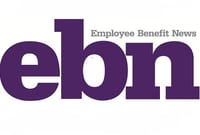 As we continue to make our way through the second quarter of 2018, now is a good time to reflect on defined contribution (DC) plan sponsor priorities for this year.
As we continue to make our way through the second quarter of 2018, now is a good time to reflect on defined contribution (DC) plan sponsor priorities for this year.
The top priorities for these plan sponsors in 2018, outlined in December 2017 by Mercer, include:
- Ensure sound plan management
- Conduct a financial needs analysis for employees
- Targeted engagement efforts
- Establish success measures
- Consider ESG options
- Enable “rainy day” savings funds for employees
- Increase diversification
- Consider financial wellness solutions
- Evaluate managed accounts
- Examine retiree-focused tools and investments
All of the above are worthy priorities for plan sponsors to focus on throughout the year, and Mercer is to be commended for compiling and publicizing them.
However, there is an additional priority that plan sponsors should be concentrating on – directly related to financial wellness – namely adopting measures that enable seamless plan-to-plan savings portability for participants, especially auto portability for participant accounts with less than $5,000. This focus on portability is proven to reduce leakage – a measurable benefit to all participants, as well as plans themselves, over the long term. And preserving savings helps sponsors to better address some of the other priorities listed above.
For participants, DIY plan-to-plan portability is a time-consuming and expensive process. According to a study of mobile workforce behaviors conducted by Boston Research Technologies, the process of rolling a 401(k) savings account from a former-employer plan into an active account in a current-employer plan took more than two months to complete for 27% of participants. The study also found that, on average, participants expect a roll-in to require them to spend 19 hours of personal time—and as the saying goes, that time is money. According to the study, 36% of participants responded that they value the personal time they would have to allocate toward completing a roll-in at between $100 and $500. Further up the spectrum, 6% of respondents said they value that time at over $5,000!
With DIY plan-to-plan portability so expensive and time-consuming, it’s no wonder that so many participants either leave their accounts behind upon changing employers, or prematurely cash out their savings. According to the Employee Benefit Research Institute (EBRI), 22% of participants change jobs every year, and of 31% of these job-changers, or about 4.6 million people, will cash out within one year of switching employers. In addition, EBRI estimates that 47% of all retirement savings accounts have balances that are less than $15,000. Cash-out leakage represents 89% of all retirement plan leakage, according to the GAO.
The twin problems of cash-out leakage and small, stranded accounts have created a significant and growing problem for America’s hardworking retirement-savers—a problem which is compounded by automatic cash-outs by sponsors of small accounts with less than $1,000.
This is why the ultimate financial wellness initiative requires plans to adopt measures to make it easy for participants to move their 401(k) savings from plan to plan as they switch jobs.
Thankfully, plugging the plan-to-plan transfer holes in the U.S. retirement system is a goal that is within easy reach.
Last summer, the technology and service that enables auto portability—the routine, standardized, and automated movement of a plan participant’s 401(k) savings account from their former employer’s plan to an active account in their current employer’s plan—went live. This industry milestone was achieved with the completion of the industry’s first fully automated, end-to-end transfer of retirement savings from a safe harbor IRA into a participant’s active account in a plan run by a large healthcare company. Since last July, over 4,000 safe-harbor IRA participant records have been matched with an active 401(k) plan account, and more than 700 of those participants consented to have their safe harbor IRA automatically rolled into the plan. Auto portability is a reality.
According to the Auto Portability Simulation (APS) that Retirement Clearinghouse developed in collaboration with Dr. Ricki Ingalls of Diamond Head Associates, in a scenario where auto portability is broadly adopted over the course of a generation, there would be 40 million fewer job-changers with under $5,000 in their 401(k) accounts by 2045. Preserving small accounts at the time of a job change incubates savings and leads to larger accounts in the future.
Furthermore, EBRI predicts that up to $1.5 trillion in savings, measured in today’s dollars, would be preserved in the U.S. retirement system following the nationwide adoption of auto portability.
All that has to happen is for plan sponsors to encourage their retirement plan recordkeepers to become members of the auto portability clearinghouse for consolidating small balance accounts. As an added benefit, the auto portability clearinghouse will also help plan sponsors to locate and match missing plan participants by tapping into reliably accurate active participant account data across the industry.
Seamless plan-to-plan portability, leading to potentially $1.5 trillion in extra retirement savings for American workers, will have a quantifiable impact on participants’ financial wellness objectives and suggest that it should occupy a higher place on sponsors’ lists of priorities.
